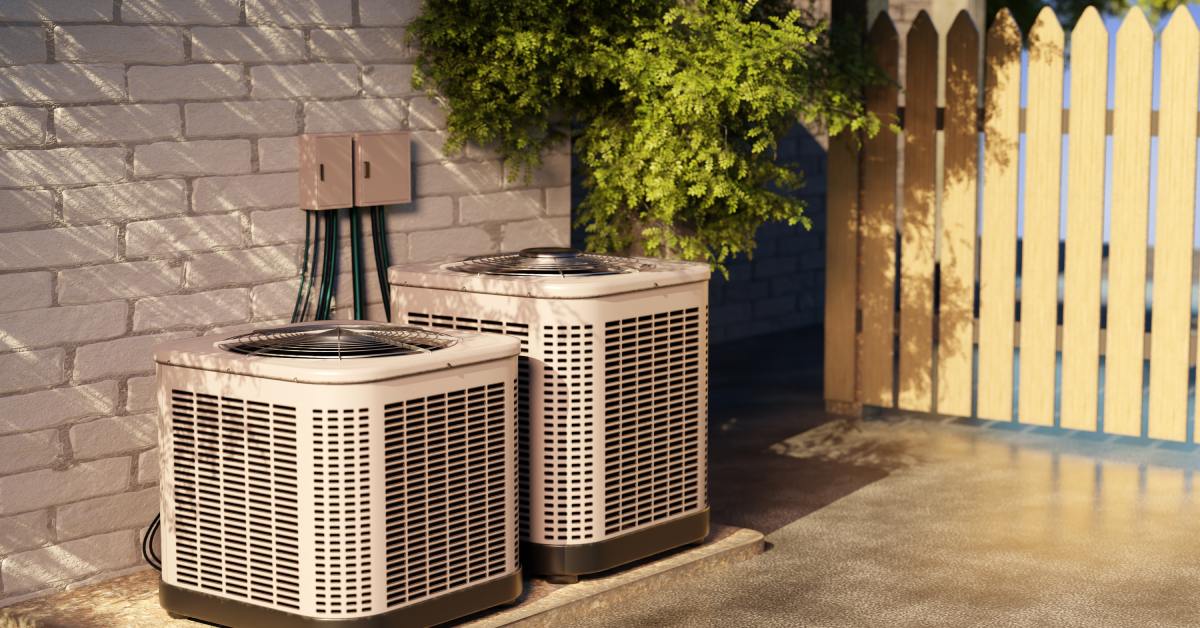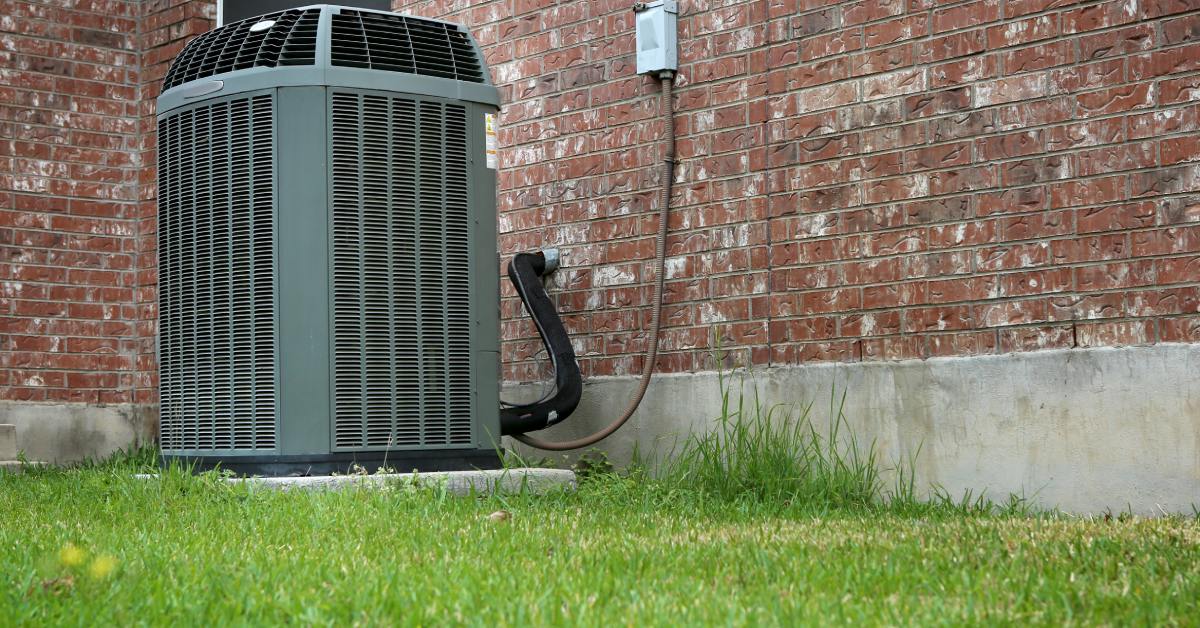
Picture this: You’re feeling the heat, quite literally. Your current air conditioner doesn’t seem up to the task, leaving rooms too hot, too cold, or worse, causing your energy bills to skyrocket. If this sounds familiar, a few things may be wrong—including the size of your AC unit. Choosing an AC that’s too big or too small for your space can lead to higher costs, uneven cooling, and unnecessary wear and tear on your system.
Our expert guide to calculating AC tonnage per square foot explains everything you need to know, from what tonnage is to determining the right size for your home. By understanding this calculation, you can enjoy consistent comfort and extend the lifespan of your air conditioning system.
What Is AC Tonnage?
AC tonnage measures an air conditioning system’s cooling capacity, not the actual weight of the equipment, despite the word “tonnage” referring to ton. For an AC unit, tonnage measures the cooling power of an air conditioner, where one ton equals 12,000 British Thermal Units (BTUs) per hour. This represents the amount of heat the system can remove from your home in 60 minutes. This measurement originated from the cooling power needed to melt one ton of ice in 24 hours.
The tonnage directly correlates to the size of space your air conditioner can effectively cool. Some examples of this in homes include:
- 1.5 tons: Suitable for spaces approximately 600–900 square feet
- 2 tons: Ideal for areas ranging from 901 to 1,200 square feet
- 2.5 tons: Works well for spaces approximately 1,201–1,500 square feet
- 3 tons: Best for areas around 1,501–1,800 square feet
- 3.5 tons: Suitable for homes or spaces measuring 1,801–2,100 square feet
- 4 tons: Perfect for spaces approximately 2,101–2,400 square feet
- 5 tons: Designed for larger areas around 2,401–3,000 square feet
Understanding tonnage enables you to communicate effectively with HVAC professionals and accurately evaluate equipment specifications. Higher tonnage systems consume more electricity but provide greater cooling capacity for larger spaces.
Factors Influencing AC Tonnage Requirements
Before we can discuss how to calculate AC tonnage, it’s essential to understand what factors can impact it. Factors such as regional climate and house size can affect the amount of power your AC unit requires to function effectively. For example, a large home takes up more space than a smaller one and requires a stronger AC system. Here are some specific factors that influence tonnage.
Climate and Regional Weather Conditions
Your geographic location and local climate patterns heavily influence cooling requirements throughout the year. Homes in consistently hot, humid climates like Florida or Texas require higher tonnage systems compared to moderate climates with seasonal temperature variations. Regional humidity levels also affect cooling demands since air conditioners must remove both heat and moisture from indoor air.
Building Size, Layout, and Insulation
Calculating AC tonnage starts with square footage, but you’ll also want to look at layout-specific features. For instance, homes with high ceilings need more cooling due to extra air volume, while open floor plans may differ from closed layouts. Likewise, good insulation keeps homes cooler and lowers tonnage needs, while poor insulation increases cooling demands.
Occupancy and Heat-Generating Appliances
The number of people in your home impacts cooling needs, as each person generates about 400 BTUs of heat per hour. If you have a large household or frequently host guests, you’ll have increased cooling requirements, especially when everyone is home at once. Heat-producing appliances like ovens, dishwashers, and dryers add to cooling demands, as do electronics such as TVs, computers, and lighting.
How To Calculate AC Tonnage

Knowing how to calculate AC tonnage per square foot helps you determine the appropriate size of air conditioner for your home. Use the following steps to calculate AC tonnage.
Step 1: Measure the Area
You can calculate the total square footage of all parts of the home that require cooling by multiplying the length times the width for each room. Include all conditioned spaces, such as bedrooms, living areas, kitchens, and hallways, in your measurements.
Step 2: Determine the Cooling Factor
Apply 20 BTUs per square foot as the standard cooling factor for moderate climates with average insulation. Hot, humid climates may require 25-30 BTUs per square foot, while cooler regions might need only 15-18 BTUs per square foot. Well-insulated homes can use lower factors, while poorly insulated structures need higher calculations.
Step 3: Calculate Total BTUs Needed
Multiply your total square footage by the appropriate cooling factor to determine total BTU requirements. For example, a 2,000 square foot home in a moderate climate requires 40,000 BTUs (2,000 x 20). This calculation provides the baseline cooling capacity before adjustments for specific conditions.
Step 4: Convert BTUs to Tonnage
Divide total BTUs by 12,000 to determine tonnage requirements since one ton equals 12,000 BTUs per hour. Using the previous example, 40,000 BTUs divided by 12,000 equals 3.33 tons. The tonnage on residential equipment is rounded to the nearest half-ton increment, so 3.33 tons would be rounded to 3.5 tons.
Step 5: Adjust for Additional Factors
Consider increasing tonnage calculations by 10-20% for homes with high ceilings, extensive windows, or significant sun exposure. Add 400 BTUs per person for occupancies above four people regularly in the house. Include 1,000-4,000 BTUs for kitchen areas, depending on cooking frequency and appliance types.
Step 6: Contact the Pros
While the above steps will give you a solid estimate, it isn’t perfect. Experts from an HVAC company can visit your home and perform a Manual J calculation, which takes into account all these factors and more. They will also be able to suggest the ideal size and model for your specific needs.
Why Proper Tonnage Matters

Selecting the appropriate AC tonnage affects every aspect of your cooling system’s performance, from daily comfort to long-term operating costs. Proper sizing ensures optimal efficiency while preventing common problems associated with undersized or oversized equipment.
Energy Efficiency
Properly sized air conditioning systems operate efficiently, using minimal electricity while delivering optimal cooling. This is because they maintain consistent performance without frequent cycling, reducing energy waste and lowering utility bills.
Optimal Comfort
Buying an improperly sized air conditioner can lead to uneven cooling, increased energy bills, and unnecessary strain on your system. These issues not only reduce your comfort but also waste money and shorten the unit’s lifespan. Proper AC sizing is crucial to ensure consistent cooling, maximize energy efficiency, and save on long-term costs.
Avoiding Costly Issues
Selecting the proper AC tonnage prevents expensive problems that arise from incorrect system sizing, saving thousands of dollars in premature replacement costs and excessive energy bills. Well-sized systems require fewer repairs and provide reliable service for their expected lifespan. This is because incorrect sizing forces the system to work harder or cycle more frequently, which puts more strain on the components.
Contact Us
Calculating AC tonnage on your own is an important step to achieving home comfort, but it’s not always easy. The experts at Style Crest can help you determine the best AC unit for your home and even install it for you. With our expertise, you can enjoy a perfectly cooled home that’s energy-efficient, reliable, and built for lasting comfort.